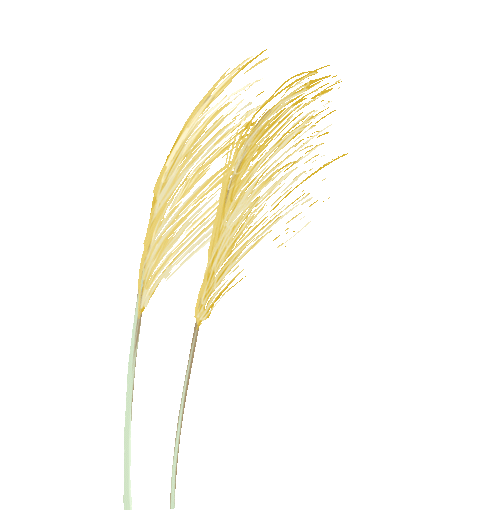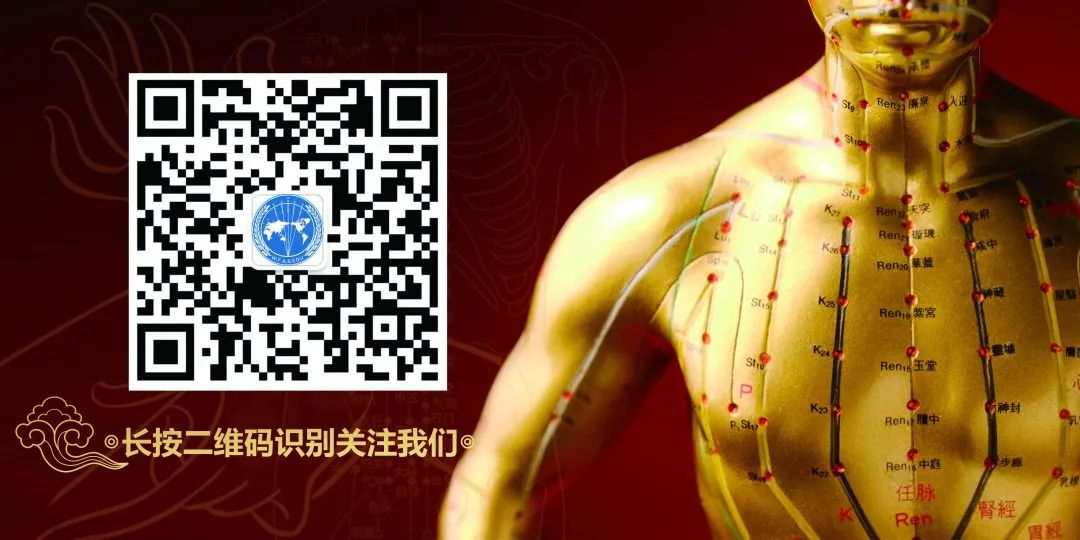
[Heat Dominating Over Dampness]

Heat dominating over dampness is a syndrome characterized primarily by excess heat in the Middle Jiao, accompanied by dampness. Due to the predominance of heat combined with dampness, it is also referred to as “Warm Heat with Damp Disease,” commonly seen in the later stages of damp-warm diseases, summer dampness, or lingering summer heat. The main clinical features include high fever, sweating, thirst, irritability, epigastric fullness, abdominal distension, a red tongue with yellow greasy coating, and a rapid or slippery pulse. Treatment should focus on bitter cold herbs to clear heat and dry dampness. This syndrome, due to the excess heat combined with dampness, often tends to transform into dryness and become a warm heat disease. Once transformed, it no longer falls under the category of damp-heat disease and should be treated according to warm heat disease.
01
Yangming Stomach Heat with Taiyin Spleen Dampness
Clinical manifestations: high fever, sweating, thirst for cold drinks, heavy body, epigastric fullness, or occasional nausea, red tongue with yellow greasy coating and dryness, and a large slippery rapid pulse.
Pathogenesis analysis: High fever, sweating, and thirst for cold drinks are signs of Yangming stomach heat. Heavy body and epigastric fullness indicate Taiyin spleen dampness. The spleen governs the muscles, and the epigastrium is located in the Middle Jiao. When spleen dampness fails to transport, it diffuses to the surface, obstructing the muscles, leading to heaviness. Dampness obstructs the qi mechanism, causing loss of ascending and descending functions, resulting in epigastric fullness and nausea. A red tongue with yellow and dry coating, along with a large slippery rapid pulse, indicates intense stomach heat; a greasy tongue coating suggests the presence of dampness.
Treatment method: Clear and drain stomach heat, while also drying spleen dampness.
Formula: Bai Hu Jia Cang Zhu Tang (White Tiger Decoction with Atractylodes) (from “Differentiation of Warm Diseases”).
This formula consists of Bai Hu Tang (Sheng Shi Gao 30g, Zhi Mu 9g, Gan Cao 3g, Jing Mi 9g) with the addition of Cang Zhu 9g.
Formula explanation: This formula uses Bai Hu Tang, a pungent and cold formula, to clear and drain Yangming stomach heat, allowing heat to exit the surface. Cang Zhu is pungent and warm, which dries spleen dampness and disperses surface dampness, thus addressing the dampness that is diffused both internally and externally. The combination of herbs primarily focuses on clearing and draining stomach heat while also drying spleen dampness, addressing both Yangming and Taiyin evils.
02
Summer Heat with Dampness, Diffusing Through the Three Jiao
Clinical manifestations: body heat, red face, sweating, thirst, dizziness, tinnitus, chest tightness, epigastric fullness, nausea, vomiting, loose yellow foul-smelling stools, scanty yellow urine, red tongue with yellow greasy coating, and a slippery rapid pulse.
Pathogenesis analysis: This syndrome is characterized by summer heat combined with dampness, centered in the Middle Jiao spleen and stomach, diffusing through the upper, middle, and lower Jiao. Body heat, red face, sweating, thirst, loose yellow foul-smelling stools, and scanty yellow urine indicate the internal presence of heat evil, diffusing through the three Jiao. Chest tightness, epigastric fullness, abdominal distension, nausea, and vomiting are signs of dampness centered in the Middle Jiao, obstructing the qi mechanism. Dizziness and tinnitus are caused by heat steaming dampness, clouding the clear orifices. The symptoms of body heat, red face, sweating, and thirst indicate the intense presence of heat evil, confirming the predominance of heat. A red tongue with yellow coating and a slippery rapid pulse indicate heat excess; a greasy tongue coating suggests the presence of dampness.
Treatment method: Clear heat, drain dampness, and open the three Jiao.
Formula: San Shi Tang (Three Stone Decoction) (from “Differentiation of Warm Diseases”).
Fei Hua Shi 9g, Sheng Shi Gao 15g, Han Shui Shi 9g, Xing Ren 9g, Zhu Ru (stir-fried) 6g, Yin Hua (flower dew is better) 9g, Bai Tong Cao 6g, Jin Zhi 1 cup (diluted).
Formula explanation: Sheng Shi Gao is extremely cold, clearing heat from the upper and middle Jiao, and its pungent flavor can release the muscles, allowing heat to exit the surface, making it the monarch herb in this formula. Han Shui Shi is salty and cold, clearing heat from the middle and lower Jiao, while Hua Shi is sweet, bland, and cold, clearing and draining damp-heat from the lower Jiao, both serving as minister herbs. The other herbs serve as assistants and envoys. The combination of Sheng Shi Gao and Han Shui Shi clears and drains the summer heat diffusing through the three Jiao, while the addition of Jin Zhi (which is generally not used now) enhances the heat-clearing effect. Yin Hua is cool and fragrant, clearing heat and transforming dampness, lightly clearing and dispersing, allowing evil qi to exit. If using Yin Hua dew, the cooling and penetrating effect is even better. The two stones combined with Jin Zhi and Yin Hua clear internally and disperse externally, removing the summer heat evil diffusing through the three Jiao. Xing Ren enters the upper Jiao, opening lung qi to regulate the water pathways. Tong Cao is bland and drains dampness, unblocking the three Jiao. The combination of Xing Ren, Hua Shi, and Tong Cao promotes the water pathways, dispersing qi and draining dampness diffusing through the three Jiao. Zhu Ru clears heat and harmonizes the stomach, stopping vomiting, unblocking the channels, and dispelling summer dampness. The combination of all herbs is aimed at expelling summer heat while also draining dampness, treating the Middle Jiao while also considering the upper and lower Jiao.
This syndrome and Bai Hu Jia Cang Zhu Tang syndrome both belong to the category of Middle Jiao heat dominating over dampness. However, Bai Hu Jia Cang Zhu Tang syndrome is characterized by Yangming stomach heat combined with Taiyin spleen dampness, with the disease location concentrated in the Middle Jiao spleen and stomach, thus using Bai Hu Tang to clear the Yangming heat, adding Cang Zhu to dry the Taiyin spleen dampness. The characteristic of this syndrome is that summer heat combined with dampness is centered in the Middle Jiao spleen and stomach, diffusing through the three Jiao, thus treated with San Shi Tang to clear heat and drain dampness, unblocking the three Jiao.
03
Summer Dampness Stagnation, Accumulating into Toxicity
Clinical manifestations: body heat, thirst, heavy headache, sore throat with redness and swelling, or red face with facial swelling, heaviness and soreness in the limbs, or even heavy pain throughout the body, epigastric fullness, frequent vomiting or yellowing of the body and eyes, scanty red urine, red tongue with yellow greasy coating and dryness, and a slippery rapid pulse.
Pathogenesis analysis: This syndrome is caused by external summer dampness evil or summer damp epidemic evil, accumulating in the Middle Jiao, obstructing the qi mechanism, leading to stagnation and steaming. Internal summer dampness leads to a struggle between the righteous and evil, hence the body heat; summer heat injures fluids, causing thirst and scanty red urine; summer dampness clouds the clear orifices, leading to heavy headache; summer dampness steams, obstructing qi and blood, accumulating into toxicity, causing sore throat with redness and swelling or facial swelling; summer dampness obstructs the muscles, causing heaviness and soreness in the limbs, or even heavy pain throughout the body; summer dampness obstructs the qi mechanism, leading to loss of ascending and descending functions of the spleen and stomach, hence epigastric fullness and frequent vomiting; summer dampness obstructs the gallbladder heat, leading to yellowing of the body and eyes; a red tongue with yellow greasy coating and a rapid pulse indicates the presence of summer heat evil; a greasy tongue coating and slippery pulse indicate internal dampness accumulation.
Treatment method: Clear heat, resolve toxicity, transform dampness, and dispel filth.
Formula: Gan Lu Xiao Du Dan (from “Warm Heat Classics”).
Fei Hua Shi 450g, Mian Yin Chen 330g, Dan Huang Qin 300g, Shi Chang Pu 180g, Chuan Bei Mu and Mu Tong each 150g, Huo Xiang, She Gan, Lian Qiao, Bo He, Bai Dou Kou each 120g. All herbs should be dried and ground into fine powder; when exposed to fire, the medicinal properties change to heat. Each dose is 9g, mixed with boiling water, taken twice daily, or made into pills the size of a marble, dissolved in boiling water for consumption. This formula was originally a powder or pill, but is now often made into a decoction. The dosage can be taken as 1/30 of the original formula or adjusted as needed.
Formula explanation: The main herbs are Huang Qin and Hua Shi; Yin Chen, Mu Tong, Huo Xiang, and Lian Qiao serve as minister herbs; the other herbs are assistants and envoys. Huang Qin is bitter and cold, clearing heat and drying dampness; Lian Qiao combined with She Gan clears heat and resolves toxicity, benefiting the throat and reducing swelling; Lian Qiao combined with Bo He lightly clears and disperses, allowing heat to exit the surface; Hua Shi combined with Yin Chen and Mu Tong clears and drains damp-heat, guiding damp-heat out through urination, and can also reduce jaundice; Huo Xiang, Shi Chang Pu, Bai Dou Kou, Yin Chen, and Bo He are all aromatic herbs that transform dampness and dispel filth. Summer dampness stagnation can easily lead to phlegm, hence Chuan Bei Mu is used to clear and transform heat phlegm. The combination of all herbs is cold and cooling, clearing heat, resolving toxicity, and transforming dampness while dispersing filth. This formula can be used for both heat-dominating dampness and damp-heat conditions.
04
Damp-Heat Obstructing Shaoyang
Clinical manifestations: alternating chills and fever, with more heat than cold, increased heat in the afternoon, irritability, thirst, chest tightness, epigastric fullness, fullness in both flanks, nausea, bitter taste in the mouth, loose yellow foul-smelling stools, difficulty urinating, red tongue with yellow greasy coating, and a slippery rapid pulse.
Pathogenesis analysis: He Xiushan in the “Revised Common Cold Theory” states: “The foot Shaoyang gallbladder and hand Shaoyang Sanjiao combine to form a single channel. Its qi transformation is partly stored in the gallbladder to transform food and drink; partly released through the Sanjiao to regulate the pores. If dampness obstructs and heat accumulates, the qi mechanism of the Sanjiao becomes obstructed, leading to excess fire in the gallbladder.” This syndrome is characterized by unresolved damp-heat in the Middle Jiao, obstructing the hand Shaoyang Sanjiao, leading to abnormal ascending and descending functions, which in turn affects the foot Shaoyang gallbladder, causing it to lose its ability to disperse and drain, resulting in dysfunction of the qi mechanism. In summary, the pathogenesis can be summarized as: dysfunction of the hand and foot Shaoyang qi mechanisms, leading to abnormal ascending and descending functions. Dysfunction of the qi mechanism prevents the defensive qi from dispersing to the surface; when the defensive qi is obstructed, chills occur; when the yang is obstructed, the righteous qi fights against the evil, leading to fever; if damp-heat is not eliminated, the qi mechanism becomes obstructed, resulting in persistent alternating chills and fever. That is: when the evil obstructs the defensive qi, it causes chills, and when the righteous qi resists, it causes fever, hence the alternating chills and fever. Due to the predominance of heat over dampness, fever is more intense while chills are milder, with increased heat in the afternoon due to the Yangming’s dominance, and the righteous qi is vigorous, resisting the evil intensely, hence the fever intensifies. The excess heat disturbs the spirit, causing irritability. Heat evil injures fluids, leading to thirst. Dampness obstructs the qi mechanism, causing chest tightness and epigastric fullness. Dysfunction of the foot Shaoyang leads to fullness in both flanks. Stomach qi reverses, causing nausea. Gallbladder heat causes a bitter taste in the mouth. Damp-heat descends into the large intestine, leading to loose yellow foul-smelling stools. Dysfunction of the qi mechanism leads to urinary obstruction. A red tongue with yellow greasy coating and a slippery rapid pulse indicate heat excess, while a greasy tongue coating indicates internal dampness accumulation.
Treatment method: Clear and disperse Shaoyang, resolve damp-heat.
Formula: Hao Qin Qing Dan Tang (from “Common Cold Theory”).
Qing Hao 4.5-6g, Zhu Ru 9g, Zhi Ban Xia 4.5g, Chi Fu Ling 9g, Huang Qin 4.5-9g, Sheng Zhi Ke 4.5g, Chen Pi 4.5g, Bi Yu San (wrapped) 9g.
Formula explanation: The main herbs are Qing Hao and Huang Qin; Ban Xia and Chen Pi serve as minister herbs, while the other herbs are assistants and envoys. Qing Hao is bitter, slightly cold, and aromatic, combined with the bitter cold Huang Qin and Zhu Ru, clears and disperses foot Shaoyang gallbladder heat, transforms damp turbidity, and regulates the qi mechanism; Ban Xia and Chen Pi combined with Zhi Ke, open and descend, disperse stagnation, harmonize the stomach, and eliminate dampness obstructing the qi mechanism; Fu Ling strengthens the spleen and drains dampness, combined with Bi Yu San to clear and drain damp-heat, guiding damp-heat out through urination. This formula is derived from Xiao Chai Hu Tang and Wen Dan Tang, with the combination of herbs working together to clear and disperse obstructed heat, resolving damp turbidity, and promoting the function of the hand and foot Shaoyang qi mechanisms.
05
Damp-Heat Jaundice (Yang Jaundice)
Clinical manifestations: body heat, no sweating, or only sweating on the head with no sweating on the body, yellowing of the face, eyes, and body, bright yellow like orange peel, thirst for water, abdominal fullness, flank pain, reduced appetite, nausea, loose yellow foul-smelling stools, scanty yellow urine, red tongue with yellow greasy coating, and a wiry slippery rapid pulse.
Pathogenesis analysis: This syndrome is characterized by unresolved damp-heat in the Middle Jiao spleen and stomach, accumulating in the liver and gallbladder, leading to yang jaundice. Internal damp-heat leads to a struggle between the righteous and evil, hence body heat; damp-heat obstructs the qi mechanism, closing off the surface qi, hence despite the heat, sweating does not occur; the head is the meeting point of all Yang, and summer damp-heat can cause only sweating on the head, as the surface qi is obstructed, leading to no sweating on the body; damp-heat steams, forcing bile to leak out, causing yellowing of the face, eyes, and body, and yellow urine, with the bright yellow color resembling fresh orange peel; heat evil injures fluids, leading to thirst; damp-heat obstructs the qi mechanism, causing abdominal fullness and flank pain; dysfunction of the spleen and stomach leads to reduced appetite and nausea; dysfunction of the three Jiao leads to water pathways being blocked, hence scanty yellow urine; a red tongue with yellow greasy coating and a rapid pulse indicate heat excess, while a greasy tongue coating and wiry pulse indicate dampness accumulation.
Treatment method: Clear heat, dispel dampness, benefit the gallbladder, and reduce jaundice.
Formula: Yin Chen Hao Tang (from “Differentiation of Warm Diseases”).
Yin Chen Hao 18g, Zhi Zi 9g, Sheng Da Huang 9g.
Formula explanation: Yin Chen Hao is bitter and cold, clearing heat and benefiting the gallbladder, dispersing qi, promoting urination, and reducing jaundice, serving as the monarch herb; in clinical use, the dosage can be increased to 30-60g; Zhi Zi is bitter and cold, clearing heat and benefiting the three Jiao, guiding damp-heat out through urination, while Sheng Da Huang is bitter and cold, clearing heat and drying dampness, purging the viscera, cooling the blood, promoting the discharge of old waste, and eliminating fullness. The combination of these three herbs, all of which are bitter and cold, clears heat, dispels dampness, benefits the gallbladder, and reduces jaundice.
Transformation and Outcome of Middle Jiao Damp-Heat Diseases

Dampness is a Yin evil, while heat is a Yang evil. When both invade the body simultaneously, they intertwine like oil in flour, making it difficult to resolve, leading to a prolonged and lingering course of damp-heat disease. Since the spleen governs the transformation and transportation of water and dampness, when damp evil obstructs the spleen, it cannot function properly, and when the spleen fails to function, dampness cannot be easily eliminated. Therefore, damp-heat diseases often center around the spleen and stomach and linger in the Middle Jiao for the longest time. During this retention, they are easily influenced by certain factors, leading to transformation, which is referred to as “transformation.” The transformation of damp-heat diseases can be divided into two types: “transformation into heat” and “transformation into cold.” After transformation, it ultimately leads to a change in the nature of damp-heat diseases, either belonging to warm heat diseases or cold damp diseases. This change in classification is referred to as “outcome.”
Transformation into heat refers to the process in which damp-heat diseases develop and transform towards heat due to Yang factors. This “Yang” generally refers to the patient’s constitution being Yang predominant; or the comparison of the two evils of dampness and heat, with heat being more severe (heat dominating over dampness), indicating a predominance of Yang evil; or the use of a large number of Yang warming and drying herbs in treatment. In such cases, it often promotes the gradual retreat of dampness while heat becomes more intense, ultimately transforming into dryness and changing its nature, thus transitioning into warm heat disease. Once damp-heat disease transforms into warm heat disease, it must be treated according to warm heat disease.
Transformation into cold refers to the process in which damp-heat diseases develop and transform towards cold due to Yin factors. This “Yin” generally refers to the patient’s constitution being Yin predominant; or the comparison of the two evils of dampness and heat, with dampness being more severe (dampness dominating over heat), indicating a predominance of Yin evil; or the use of a large number of Yin cooling herbs in treatment. In such cases, it often promotes the gradual retreat of heat while Yang qi is injured and dampness becomes more intense, ultimately changing its nature and transitioning into cold damp disease. Once damp-heat disease transforms into cold damp disease, it must be treated according to cold damp disease. For example, in the later stages of damp-warm disease, symptoms of dampness and Yang deficiency such as dizziness, palpitations, chills, limb swelling, and difficulty urinating can be treated with Zhen Wu Tang, which belongs to this category.
If the Middle Jiao damp-heat does not transform into heat or cold, it gradually transmits to the lower Jiao, resulting in lower Jiao damp-heat syndromes.
Source: China Traditional Medicine Newspaper
Authors: Liu Jingyuan, Wang Qingxia
Exciting content continues
Recommended Quality Online Courses from Shizhen Education

-
Chinese Acupuncture Studies
-
Fundamentals of Acupuncture
-
Basic Theory of TCM, the Gateway to Learning Chinese Medicine
-
24 Solar Terms, Meridians, Acupoints, and Health Preservation
-
Pediatric Tuina Special: Comprehensive Guide to Common Pediatric Diseases
-
One Moxa Stick to Make You a “Family TCM Practitioner”
-
Taoist Wuji Health Preservation Course
-
Thread Embedding and Needle Knife Therapy
Shizhen Education



Key Sections · Click the title to enter
Instructor Introduction Training Highlights Course Registration
Health Mall Online Classroom
For online learning courses, please click Read the original text

